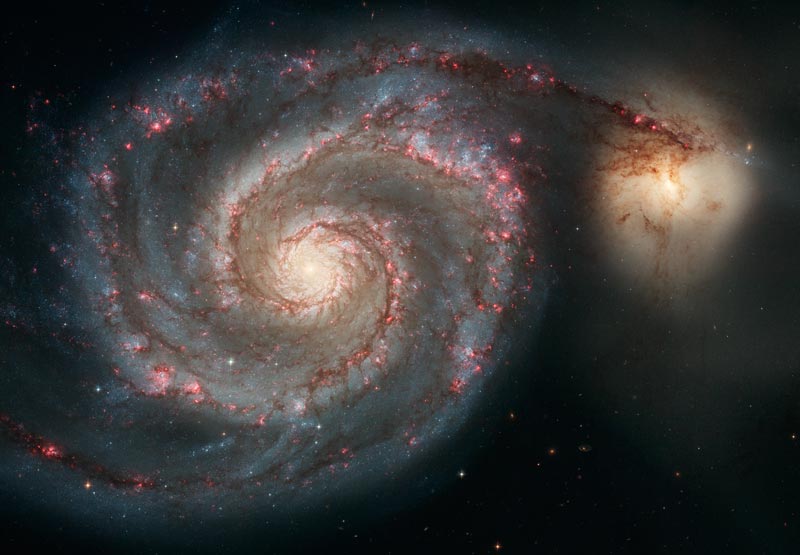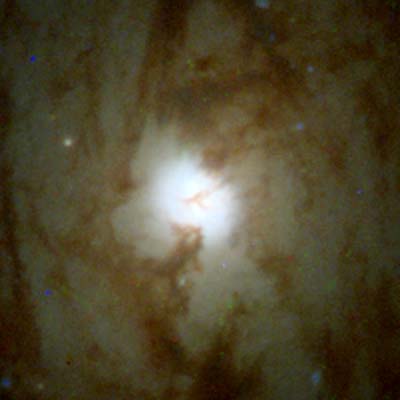
Been a while since the IotD had a Hubble image... partly because they were not all that unusual or striking. This was released recently (maybe because it's beautiful) and is today's
Astronomy pic of the day. The main galaxy there is NGC 5194, and it's baby brother in the corner is NGC 5195. You could see these with an ordinary telescope, they are ONLY 37 million light years away. So if those star-naming people convince you to get a star named for you, perhaps it will be one of the millions and millions of stars in this shot.
The Hubble has already looked into NGC 5194 further:

From
here, we find that the center of that thing MIGHT be a
massive black hole!
Quote:
The galaxy's massive center, the bright ball of light in the center of the photograph, is about 80 light-years across and has a brightness of about 100 million suns. Astronomers estimate that it is about 400 million years old and has a mass 40 million times larger than our Sun. The concentration of stars is about 5,000 times higher than in our solar neighborhood, the Milky Way Galaxy. We would see a continuously bright sky if we lived near the bright center.
The dark "y" across the center is a sign of dust absorption. The bright dot in the middle of the "y" has a brightness of about one million suns, but a size of less than five light-years. Its power and its tiny size suggest that we have located the elusive massive central object that produces powerful radio jets, which many scientists believe is a supermassive black hole.
Surrounding the center is a much older stellar population that covers a region of about 1,500 light-years in diameter and is at least 8 billion years old, and may be as old as the Universe itself (probably at least 13 billion years).
Further away, there is a "necklace" of very young star-forming regions, clusters of infant stars, younger than 10 million years, which are about 700 light-years away from the center. Normally, young stars are found thousands of light-years away.
|




